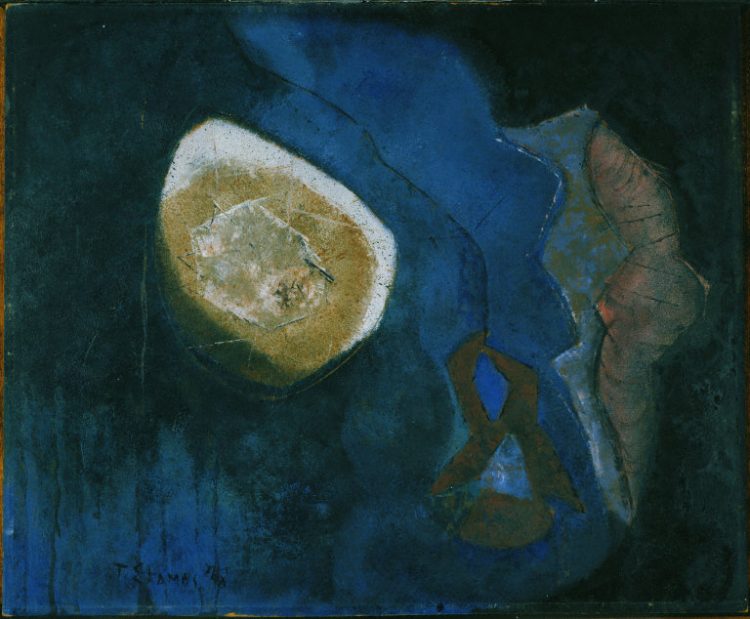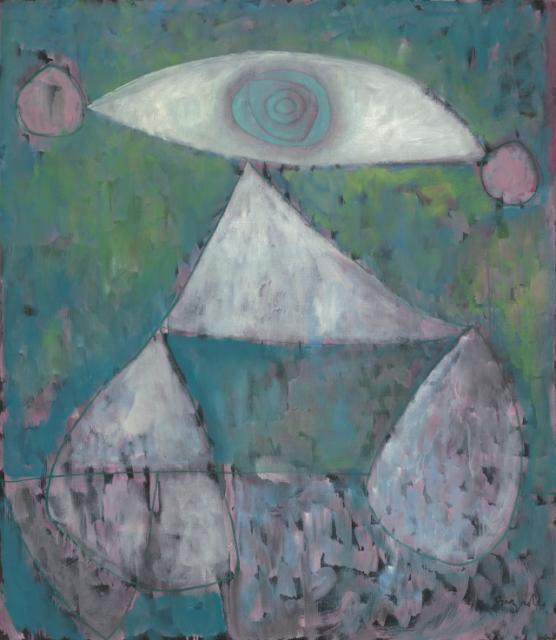
Theodoros Stamos, Full Moon, 1948. Oil on canvas, 20 x 24 in. The Phillips Collection, Washington, DC. Gift of Peggy Davis Winston in memory of Thomas B. Winston, 1994
“I saw just hundreds of Klees, hundreds and hundreds. Between Nierendorf Gallery and the Buchholz’s Gallery there were just hundreds all the time with changing exhibitions.”—Theodoros Stamos
The son of Greek immigrants, Theodoros Stamos grew up on the Lower East Side of New York and exhibited an early talent for art, receiving a grant to attend the American Artists School at age 13. It was there that Stamos met artist Joseph Solman, an important mentor, whose own infectious love of Paul Klee was quickly instilled in his young protégé. Stamos not only recalled seeing “hundreds” of Klees on view regularly at New York’s commercial galleries, he also enjoyed physical contact with his art while working as a framer, handling paintings that Klee’s dealer brought to his 18th Street frame shop from 1941 to 1948.
This work is on view in Ten Americans: After Paul Klee through May 6, 2018.


